#marijuana
IIHS Claims Marijuana Legalization Causes Crashes
It’s always nice to get a break from the endless stream of industry marketing materials about electrification, though this week’s impromptu theme still involves going green. Following news that General Motors is considering changing its drug testing policies to exclude marijuana, there has been heavy coverage of an Insurance Institute for Highway Safety (IIHS) study claiming states that have legalized recreational use of cannabis are seeing more crashes.
But the framing seems wildly irresponsible as it fails to highlight the problem being heavily tied to individuals operating a vehicle under the influence of marijuana and alcohol combined. It’s more or less what the IIHS attempted to do in 2018 with help from the Highway Loss Data Institute (HLDI). Our guess is that the duo is seeking out fresh reasons for insurance companies to raise rates in regions that have legalized pot because even their own research complicates the issue.
First Ticket for Stoned Driving Issued One Hour After Legalization
Marijuana seems to be a reoccurring theme this month. Canada, which legalized recreational use of the drug on Wednesday, has already had an opportunity to remind its citizenry that there are still some ground rules that must be followed. Literally one hour after weed received the green light, Winnipeg police issued a citation for consumption of cannabis inside a motor vehicle.
Last week, we described the difficulties Canuck police will face when attempting to prove someone is driving under the influence of the herb. However, the country’s updated rules mean cops don’t actually need to prove you were driving at all. Simply having it in the cabin is enough to get you slapped with a minor infraction.
Higher Risk: Study Claims States That Legalized Marijuana Have More Traffic Accidents
The Insurance Institute for Highway Safety and the Highway Loss Data Institute announced Thursday that auto crashes in states with legalized recreational marijuana have increased 6 percent. Both groups will be on hand at the Combating Alcohol-and Drug-Impaired Driving summit at IIHS’ Vehicle Research Center in Ruckersville, Virginia to present two studies on the issue. Perfect timing, considering Canada just became the second country to legalize the substance and support for decriminalization continues to grow in the United States.
Of course, things are rarely so simple. While the IIHS and HLDI remain confident in their research, the National Highway Traffic Safety Administration claimed marijuana use was unlikely to contribute to traffic mishaps in any meaningful way back in 2015. And that’s just for starters. There is so much conflicting information on this issue, it’ll make your head spin harder than the most savage bong rip of your life, bro.
With Legal Weed Just Days Away, Canuck Cops Wonder How to Get Blood From a Stone(d Driver)
The large country just north of Cleveland will make it legal to buy and consume marijuana on October 17th, no doubt turning the air in this author’s neighborhood even skunkier that it already is.
With the lifting of prohibitive laws comes new driving-related legislation designed to crack down on stoned drivers and placate a somewhat nervous public. Problem is, law enforcement’s tool chest remains pretty bare. The one government-approved method available to cops to check if a driver is stoned — a saliva test — might not work if it’s cold out. Whoops.
Don’t worry, though — there’s always a blood test. It’s the only way to ensure the not-always-accurate saliva test returned a true reading, but there’s a big problem with that, too: time.
License, Registration, and Saliva, Please: Critics Cry Foul Over 'DUID' Swab Test
As jurisdictions across the continent prepare to legalize the consumption of marijuana, assuming they haven’t already, the methods of testing for drug-impaired driving haven’t advanced quite as rapidly as legislation.
While breathalyzers are a mainstay of the law enforcement toolkit, getting an accurate reading of just how impaired a drug-using driver really is isn’t an exact science — despite some claims to the contrary. Blood tests for THC, the active ingredient in marijuana, are often misleading. Actual impairment really comes down to the user, not the blood reading. A driver’s buzz could easily have worn off long before getting behind the wheel, despite the elevated presence of THC in their bloodstream.
Apparently, demands for better testing is something the Colorado Department of Transportation hears at meeting after meeting.
North of the border, the entire country of Canada goes weed-legal this fall, and the likely method of detecting DUID (driving under the influence of drugs) is already coming under fire.
Luckiest Ford Dealer in America Finds $1 Million of Weed Inside Mexican-built Fusions
Likely the answer to the prayers of one very bored sales representative, an Ohio-based Ford dealership was issued a batch of Mexican-built Fusions sedans with roughly $1 million of marijuana hidden inside. The vehicles were assembled in Hermosillo, Sonora, Mexico and shipped by rail into a CSX yard in Lordstown before making their way to a Youngstown Ford dealer.
According to the local police department, the dealership gradually discovered the marijuana between July 7th and July 11th — packaged in half-moon containers covertly stored in the spare-tire compartment under the trunk’s lining. Since it’s unlikely this is a bold new promotional strategy on the part of Ford, authorities are currently trying to uncover who was supposed to take delivery of the drugs before they arrived at the dealer lot.
Georgia Police Occasionally Placing Innocent People in Jail for 'Drugged Driving'
It’s estimated that roughly 28 people are killed every day as a result of drivers intoxicated on alcohol. In 2015, 10,265 people died in alcohol-related incidents, accounting for nearly one-third of all motor vehicle fatalities within the United States. However, the Department of Transportation shows the number of deaths associated with drunk driving trending downward since 2007. Likewise, the number of annual self-reported alcohol-impaired driving episodes recorded by the CDC have diminished to record lows in that same timeframe — and so have arrests.
Law enforcement likely played an important role. Police departments take drunk driving seriously and decades of aggressive actions have made the risks involved less than appetizing to even those whose judgement is clouded by booze. But as alcohol-related arrests have plummeted, drug-related arrests have gone up.
While much of this can be attributed to drunk drivers who decided to double-down with marijuana, drugs are estimated to be a factor in 16 percent of motor vehicle crashes where alcohol isn’t present. This has resulted in some police departments implementing special task forces designated to identify and arrest “drugged drivers.” But there is a problem — officers in Georgia have been arresting innocent people.
Study Links Legalized Recreational Marijuana to Increased Crash Rates
Tragically, the Insurance Institute for Highway Safety has correlated the legalization of recreational marijuana use with more automobile accidents. Pot smoking in Colorado, Oregon and Washington seems to have resulted in collision frequencies roughly 3 percent higher than what would have been expected without legalization, according to a recent analysis from the Highway Loss Data Institute.
While this certainly isn’t an endorsement for de-legalizing recreational marijuana use, it is a reminder to stay off the roads if you’re having your head changed. Operating a motor vehicle while baked can get you into a sticky-icky situation, and nobody wants you having a green out on the expressway. That said, risks associated with driving under the influence of marijuana are much less cut-and-dried than alcohol.
This is largely due to how difficult it is for researchers to test marijuana. Despite its growing legalization, marijuana is classified by the Drug Enforcement Agency as a Schedule 1 drug, and subject to the highest level of restriction. Researchers need approval from their institution and apply for a license from the DEA before conducting a study. The government also has only so much pot to dole out for research purposes and gives the majority of it to the National Institute on Drug Abuse — fair and balanced testing of whether or not getting high while driving is safe is a little lower on NIDA’s list of priorities. In this instance, the same might be suggested of the IIHS.
Looming Legal Weed Sparks Roadside Worries in Canada
Canada’s oh-so-green federal government sure isn’t concerned about one form of air pollution — clouds of marijuana smoke. With the country’s cities already infused with the tell-tale odor of wacky tobaccy, legislation has been tabled to make possession of the drug legal, perhaps by as early as July 2018.
Great news for grass aficionados, but a troubling turn of events for road safety advocates. The jury’s out on whether Canada’s law would spark an uptick in drugged driving, but the proposed methods of testing — and convicting — weedy drivers has raised other concerns. One group has a problem with the Great Green North’s strategy to root out baked motorists.
Reefer Madness: 'Driving While High' Laws Aren't Based on Science, Says Study
Impairment tests used by authorities in U.S. states where marijuana use is legal in some form have no basis in science, and their results essentially mean nothing, a recent study concludes.
Commissioned by the American Automobile Association’s safety foundation, the study found that no blood test for THC, the active ingredient in marijuana, can accurately determine a driver’s level of impairment, the Associated Press reports.
The finding blows law enforcement’s main method of convicting high drivers into the weeds.
Attending the Detroit Auto Show? Here's Some Free Weed
The big North American International Auto Show represents hundreds of millions of dollars of economic activity. There are displays needed to be built, attractive product specialists to be hired, and Jumbotron screens to be rented. More than 5,000 media members from around the world are credentialed for the show. In the two days of the media preview, busy video and audio production teams work behind the scenes at the press conferences and caterers prepare food for the ravenous auto journos. Besides what goes on inside Cobo Hall, there is also spin-off business from those visiting journalists and others from out of town working the show needed lodging, food and entertainment.
Now a Detroit medical marijuana dispensary, The Clinic on Detroit’s famed Eight Mile Road, is trying to get a portion of that economic activity (and some free publicity too, I’m guessing) by running a special offer for people working at the show.
Denver Police Know How To Catch Stoned Drivers, Feds Want To Learn More
The joke that spotting a high driver is as easy as looking for the car safely going 7 mph on the interstate isn’t entirely accurate, according to Denver police.
“You’d be wrong. We’ll see the same levels of intoxication between someone who’s been using alcohol and someone who is on drugs,” Denver police Captain Mark Chuck said Wednesday. “There’s virtually no difference.”
Spotting those signs of impairment could become very important as federal regulators devote resources to developing nationwide standards and training tools for law enforcement. The recently signed federal highway funding bill, dubbed Fixing America’s Surface Transportation (FAST) Act, directs the Transportation Department to study how to spot marijuana-impaired drivers as more states legalize the drug.
How Stoned is Too Stoned to Drive? The Feds Want To Know
Puff, puff, pass that bill. Federal authorities want to know how stoned is too stoned for drivers, according to a provision in the recently signed Federal Highways Bill.
The new law directs U.S. Department of Transportation Secretary Anthony Foxx to study the effects of marijuana on drivers and present those findings to Congress by the end of 2016.
As more states legalize marijuana — Oregon and Alaska joined Washington and Colorado with legal pot, and 12 states have decriminalized possession — Congress asked the department to determine how to train police to spot stoned drivers and how to test them.
According to a Gallup Poll this year, 47 percent of American surveyed said they thought marijuana would make the roads less safe in states with legalized cannabis.
Cheech And Chong's 1992 Toyota Low Boy Is For Sale In Spokane, Apparently
Or is it a 1991?
We could pore over the details of a Toyota pickup festooned with more weed than the University of Colorado Boulder campus, or we could just admire the grapes on “Mike” for selling his truck “not used for much than errands” with that kind of photo in Washington on Craigslist.
What would you say your business is, Mike?
Junkyard Find: 2001 Suzuki Swift, Colorado Bag-O-Legal-Weed Edition
I live in Colorado, where recreational cannabis has been legal since the beginning of 2014. The (allegedly) medical-only stuff had been available all over Denver, complete with sign-spinners on street corners, for years before that, and so nothing much changed when the Reefer Man was allowed to sell his wares to just about any adult. Sure, hundreds of doomed recreational dispensaries have joined the hundreds of doomed brewpubs and doomed tattoo shops fighting for the not-so-abundant dollars of the thin slice of the Denver population interested in shatter hash, yeast-sludge-filled draft beer, and/or blotchy tattoos of the Chinese characters for “poop”… and I’ve started seeing bags of weed in junkyard cars here.
Prior to legalization, no self-respecting tow-truck driver or junkyard employee would have allowed free pot to slip by, but nowadays a few grams of mystery doobage is about as appealing to those guys as a half-empty 40-dog of King Cobra found in the trunk.
Here’s a Suzuki Swift that I found in a Denver yard with such a bag that I spotted tied to the gas spring on the hatch.









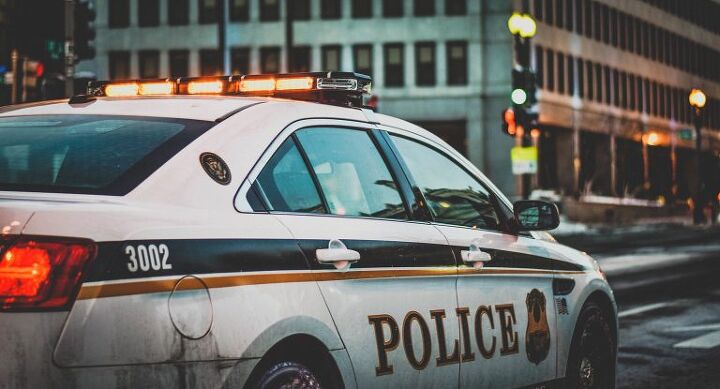

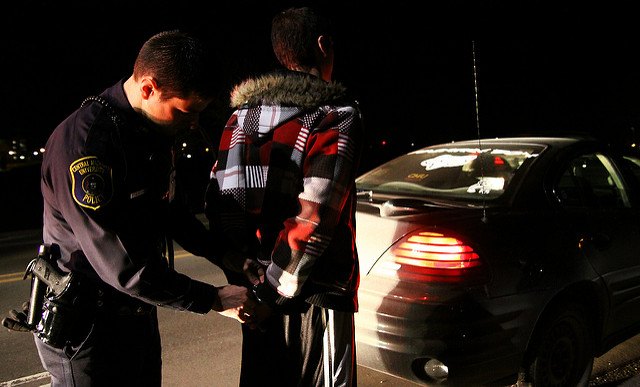
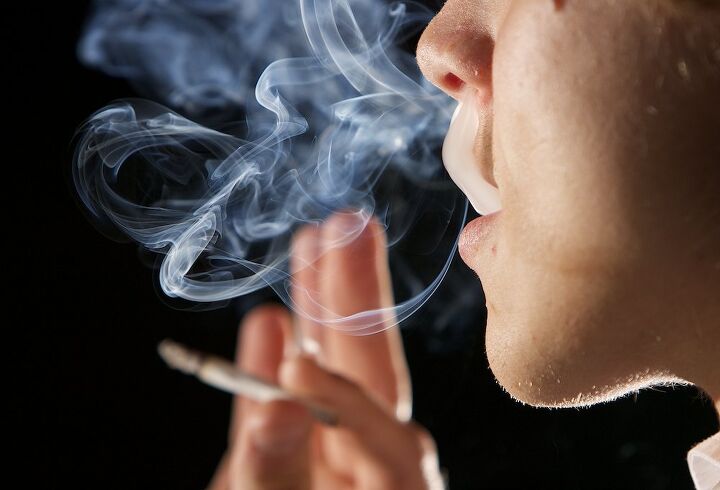

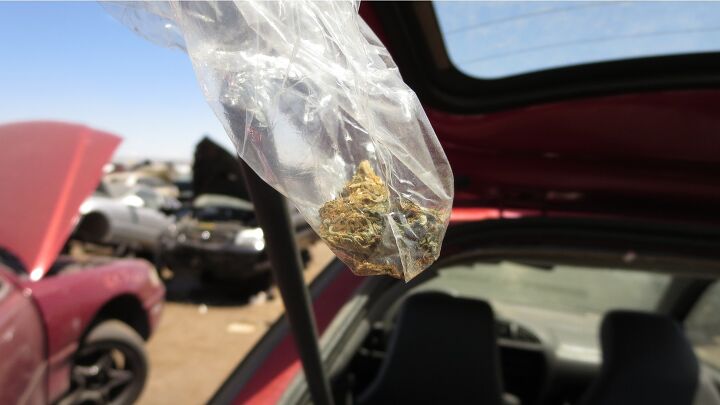
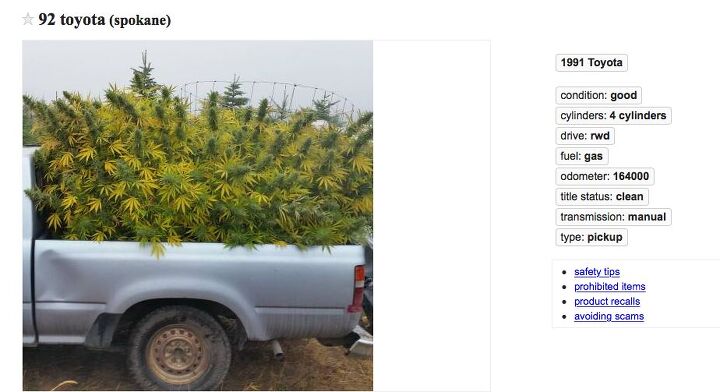
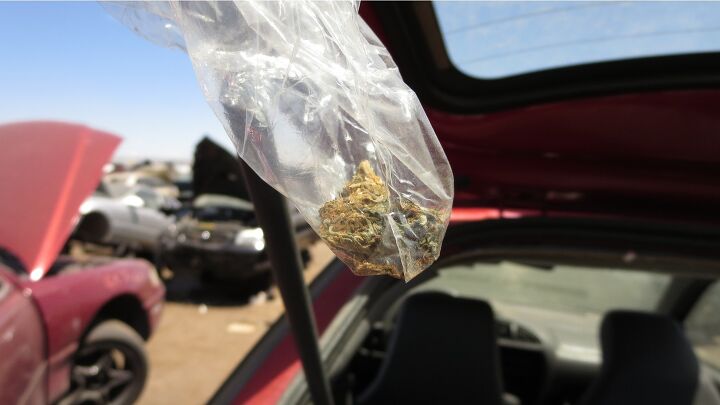












Recent Comments